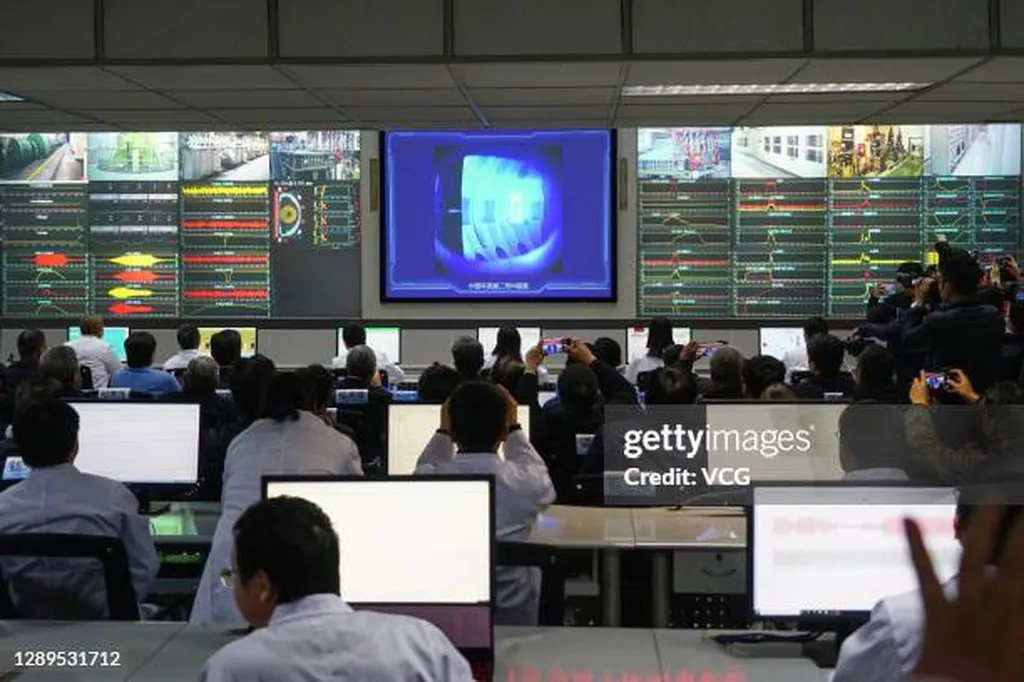In the heart of China’s HL-2A tokamak, a groundbreaking study has shed new light on the complex dance of turbulence that governs the behavior of edge plasmas, with significant implications for the future of fusion energy. Led by Dr. Y. Yu of the Sino-French Institute of Nuclear Engineering and Technology at Sun Yat-sen University, the research, published in the English-language journal *Nuclear Fusion*, offers a nuanced comparative analysis of electrostatic and electromagnetic turbulence, challenging existing theories and opening new avenues for optimization in fusion reactors.
The study, conducted using a sophisticated reciprocating multi-probe array, simultaneously measured both types of turbulence in low-beta plasmas. The findings reveal a stark contrast in their impacts on particle transport. “Electrostatic fluctuation-driven particle flux exceeds electromagnetic-induced transport by 3–4 orders of magnitude,” Dr. Yu explained. This discovery underscores the dominant role of electrostatic turbulence in cross-field transport dynamics, a critical factor in understanding and controlling plasma behavior.
However, the story doesn’t end there. Electromagnetic turbulence, particularly in the 20–80 kHz range, also plays a significant role in particle transport. Higher frequency electromagnetic fluctuations (80–200 kHz), however, show a reduced impact compared to their electrostatic counterparts. This nuanced behavior suggests that existing electromagnetic turbulence theories may need refinement to accurately capture the complex dynamics at play.
One of the most intriguing findings is the complex behavior of electromagnetic fluctuations as the radial magnetic field perturbation ($\delta {B_r}$) increases. The study identified counteracting transport components (${\Gamma _{ne – Br}}$ and ${\Gamma _{vt – Br}}$) of comparable magnitude but opposing directions. “This could necessitate adjustments to existing electromagnetic turbulence theories,” Dr. Yu noted, highlighting the need for further research and theoretical development.
The study also revealed strong nonlinear interactions between electrostatic and electromagnetic turbulence, with experimental identification of Geodesic Acoustic Mode (GAM) signatures in both turbulence spectra. This concurrent coupling of magnetohydrodynamic activity and GAM with electrostatic fluctuations suggests potential energy transfer mechanisms between these modes, adding another layer of complexity to the understanding of plasma behavior.
The implications of this research for the energy sector are profound. By unraveling the intricate interplay between different types of turbulence, scientists can better optimize plasma conditions in fusion reactors, paving the way for more efficient and stable energy production. As the world looks to fusion energy as a potential solution to the global energy crisis, studies like this one are crucial in advancing our understanding and bringing us closer to realizing the promise of clean, limitless energy.
Dr. Yu’s work, published in the esteemed journal *Nuclear Fusion*, represents a significant step forward in the field of plasma physics. By challenging existing theories and shedding new light on the complex dynamics of edge plasmas, this research is poised to shape the future of fusion energy and contribute to the ongoing quest for sustainable, carbon-free power sources.

